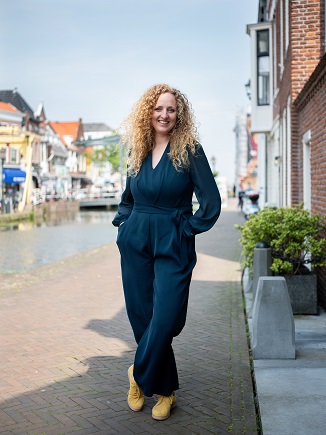When I started out as a student of urban affairs and policy and later as a researcher, I found it very exciting to speak to residents outside on the street. Nearly two decades later, I know that many city professionals — ranging from officials to designers and developers — are also struggling to keep in touch with what’s happening on the street. This contact is of course necessary, as it provides the professional with an important form of information to support decisions and designs. These are the “soft data”, which rub shoulders with the hard data of the smart city.

But let’s be honest, even after two decades in all kinds of streets and parks, I’m sometimes speechless. I have encountered difficult situations in my work that make me wonder if I have chosen the right profession. For example, for a study on the use of public space, I observed for a moment a place where a girl was being harassed while I was there – fortunately an administrator present intervened. What does this situation say about, for example, the girl’s perception of security? You will only find out in a conversation with this girl and with the manager.
This event made me realize that the perception and experience of public space, and the relationship between the inhabitants, are also important information for the planning and management of public spaces. Not only are the numbers on vandalism, nuisance or burglary revealing, but experience counts too.
As a city professional, you may therefore encounter situations in the street and among the inhabitants that you would have preferred not to encounter, but which are part of the reality of the city. These are often situations that cannot be captured in the form of big, open data, which are now among the most important sources of information in the city. These sounds and images of the street are also part of the data – ‘soft data’, of course – which make it possible to support decisions, design new public spaces or formulate policies.
Asking citizens the right questions and looking closely at the environment in all its facets is therefore a challenge. Researchers like me and my former colleagues at the Leiden-Delft-Erasmus Center for BOLD Cities, which focuses on projects that focus on the citizen and government perspective on big, open, and linked data, help professionals looking to aim for the ‘outside. Bringing professionals together with residents and visitors in the street – where all the digital, but also social developments are reflected – is an absolute added value in order to be able to supply the smart city with soft data as well. Moreover, the necessary reflection on the impact of politics – or rather the absence of politics – on the smart city also takes place in the streets.
A smart public space therefore benefits from city professionals who can read both hard, big and open data, and are informed by the sounds of the street: the soft data that gives color and context to hard numbers.
Linda Zuijderwijk is an urban sociologist and conducts research on socio-spatial issues faced by municipalities, developers, housing associations and others. She specializes in public space issues and provides tailored advice based on well-founded research.

“Food expert. Unapologetic bacon maven. Beer enthusiast. Pop cultureaholic. General travel scholar. Total internet buff.”
 DodoFinance Breaking News Made For You!
DodoFinance Breaking News Made For You!
